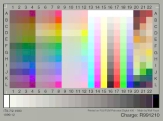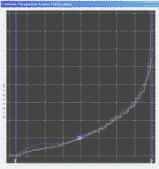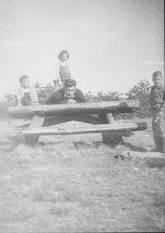I have accumulated a
great deal of knowledge and software related to HDR
over the last few years and am making the work
available here. Everything is contingent on
permissions, of course, and most if not all are for
personal or academic use only.
Most of what is here is in the form of Matlab
scripts. All that I considered useful, were compiled
into executables with Matlab 5. There are some
EXR-HDR conversion utilities derived from the code in
the EXRTools distribution (Copyright (C) 2003 Billy
Biggs). ILM (Industrial Light & Magic) produces
and makes available some utilities for use with their
OpenEXR distribution, most useful is the 'exrdisplay'
program. Drag and Drop an EXR image onto the exec and
the image will be displayed on the monitor.
Here is a list of Matlab scripts
for assembling and compressing HDR images.
Film scanning. Growing up, one of the memories with which I
characterize my childhood, are the dozens
of images my father took and kept. Some of the images go
back to the late 1930's and are of he and relatives, friends,
or family in Roan Mountain, Tennessee. Some are from WWII.
Many were lost in the later years of his
life when, as with so many, he suffered premature senility
and Alzheimer's before he died.
I'm sure many "boomers" like me have
inherited a collection, not just of prints, but of
negative film as well. My work developed a
method to digitize the negatives using commonly
available equipment. Hopefully, anyone will be able to
digitize their films in a level of quality not available before.
Families can save film images that are currently
deteriorating with the passing of time. The method is a
spin-off of, and is based on, the algorithm by Paul
Debevec, Ph.D.. The more experience and skill with a
desktop computer, the better. Combine a desktop
computer with a good scanner and a light source and
you have the makings of a professional grade digitizer. Here is an image from the 1940's. My uncle and two cousins plus either me or my brother(the todler)
The difference between this and common Back Scanning
approaches is the format of the digitized image. High
Dynamic Range images store image data in floating point
format. A series of exposures of the same image are combined
in such a way as to yield one HDR image. The HDR may be treated
as a real negative and a software exposure then made into a
digital print. Where HDR differ is in the introduction of compressors.
A compressor attempts to select, from the information available
in the digital negative, enough data to create a single print. More than a standard image
from a negative, the compressed image reflects the philosophy of the designer.
Some imitate the human visual system. Some reproduce real-world methods
such as photographers may use (dodge & burn).
Still others attempt to be objective and present all detail in the
negative in the digital print.
You will need a viewer for the
HDR film scan.
Here is a brief page on using the scanner to make portraits.Scanner Portraits
Occasionally color issues show up. In scanning film,
ND-filters are used as a substitute for shutter speed
control. If the filters have a cast, Matlab scripts will
make the correction. Better filters will not need the
correction. Here are Matlab correction scripts to do the job.
If you don't have the science and math for this, then wait until I clean/simplify them some.
These are not Plug 'n Play. Read the scripts and the notes inside.
A Matlab script to construct a CIE gamut chart is
also available.



